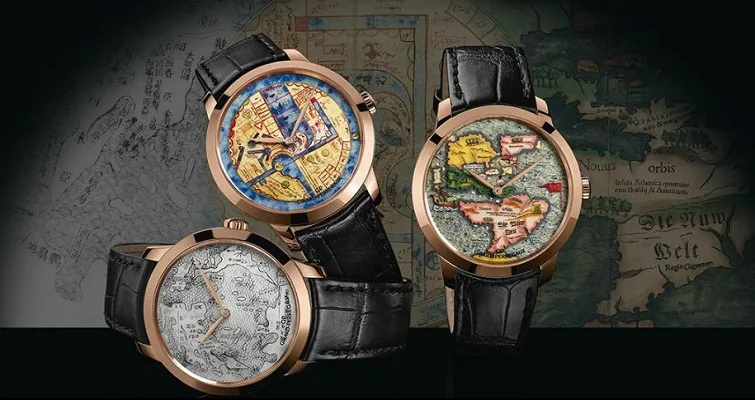By Osheen Arakelian
Thanks to the talents of artisans of miniatures, who craft fine detail over a background of extraordinary materials, Girard Perregaux’s Chambers of Wonders collection offers three meticulously immortalised cartographic parentheses of time in the limited space of a watch dial. So what lies inside these Chamber of Wonders?
The three timepieces represent three different eras and three worlds interpreted with beautiful precision. These three interpretations include; The Pearl of Wonders, the Terrestrial Map and The New World. Renaissance images have been immortalised and presented on three dials, each being numbered within a trio of pink gold Girard-Perregaux 1966 watches. Inside each watch beats the GP03300 automatic manufacture caliber movement. The mainplate and bridges are carefully drawn, chamfered, and circular-grained and decorated with Cotês de Genève. Composed of 205 parts, each movement offers a 46-hour power reserve and beats at 28,800 vibrations per hour. However, that is just the beginning because each of the three variants offer something truly wonderful on the dial.
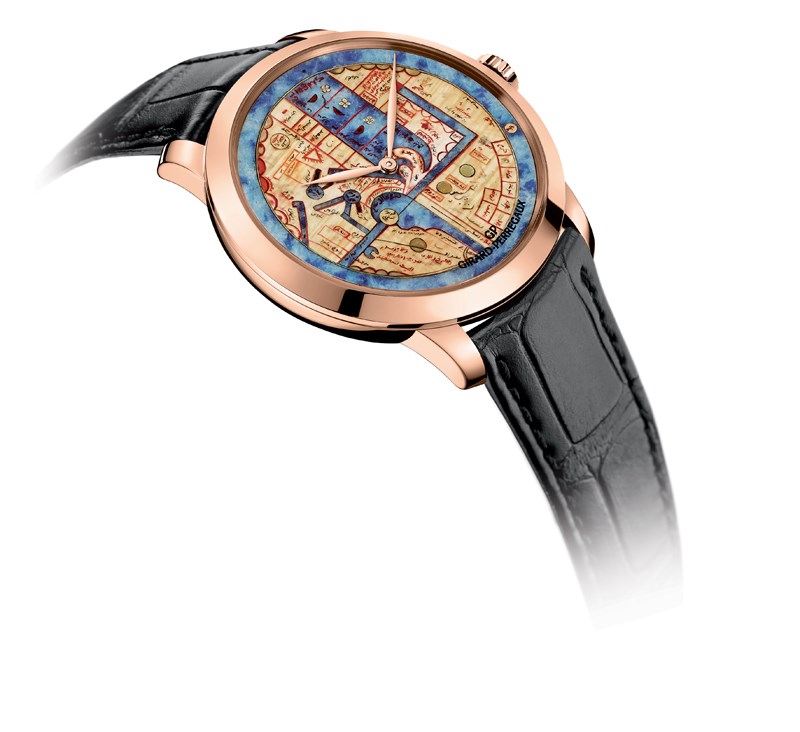
Firstly, the Pearl of Wonders, that was a map drawn during the first half of the fifteenth century by historian Ibn al-Wardi. It was inspired by the theories of Ptolemy, the Greco-Egyptian astronomer and astrologist who lived in Alexandria at the beginning of the 2nd century AD and who is considered to be the father of geography. The dial has been miniaturised and centres on the Arabian peninsula, the hub of the sacred pilgrimages. The image shows the unlikely lines of the mythical map that allow us to recognise Africa hosting the mountains where the Nile takes its source. The river, represented by a wide blue line, suddenly flows into the Mediterranean at an abrupt right angle. In the center, surrounded by the Red Sea and the Persian Gulf surmounted by the Indian Ocean, the Arabian Peninsula occupies a semicircle. Other noticeable elements are the Persian Gulf, the Indian Ocean and, in the distance, India, Sindh and China.
To bring the piece to life, sodalite stone has been used with its isometric structure and silica-poor minerals. The sodalite stone, known for its hardness, comes from a block which a disk 0.70mm high is cut and polished manually. It is meticulously carved and engraved by hand. It takes almost 4 hours of scalpel work for it to house the fragmented mosaic of a papyrus, 0.25mm thick. Once locked between two steel plates, to ensure that its surface is perfectly flat, the parchment is then painted over 28 hours, reproducing the contours of the ancient map. Then a coat of lacquer covers the work of art. Over 50 hours of patience and you can finally admire The Pearls of Wonders.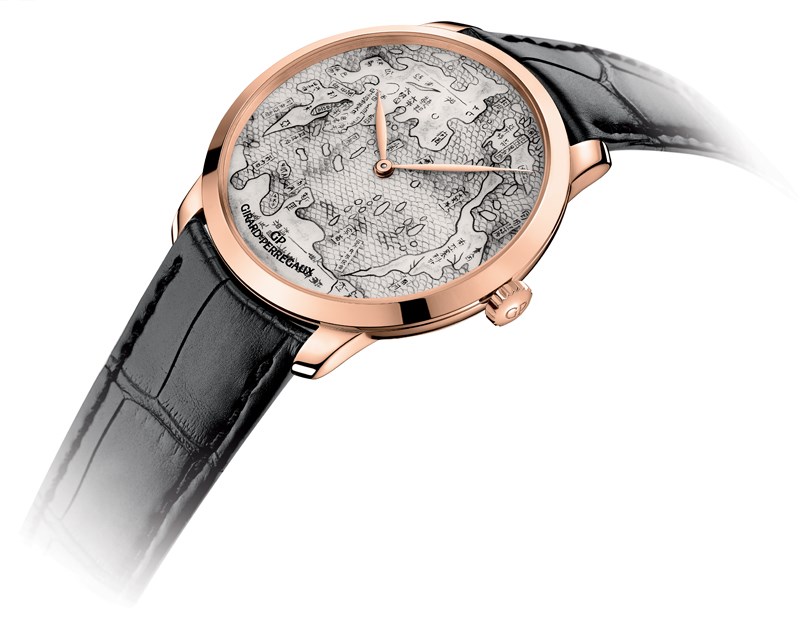
Secondly, the Terrestrial Map, that is constrained within a circle. An Old Chinese Map selected by Girard-Perregaux has been inspired by the work of Italian Jesuit, Matteo Ricci who was a theologian, philosopher, mathematician, cosmologist and astronomer. He spent the latter part of his life in China, sharing his knowledge with scholars and officials at the point of becoming the first Westerner allowed within the walls of the Forbidden City. Under the Ming Dynasty, he translated the state of global geographical knowledge for his hosts by repositioning China as the starting point. The globe he translated had already mapped out the five continents. Nevertheless, the four oceans were featured. Other sophisticated indications, written in Chinese, show incredible geographical and astronomical precision.
For this particular piece, Girard-Perregaux opted to use white jade stone, with translucent veins giving the perception of depth. For each dial, a block of white jade stone has been extracted into sculpted discs, after carefully polishing them to 0.70mm, the ideal thickness needed for the dial. After this step, 17 hours of meticulous craftsmanship is needed to reproduce the miniaturised map, using natural India ink mixed with a special binder. Each detail on the dial has been meticulously done, right down to the accuracy of the gray shades and the tiny coastal and territorial curves.
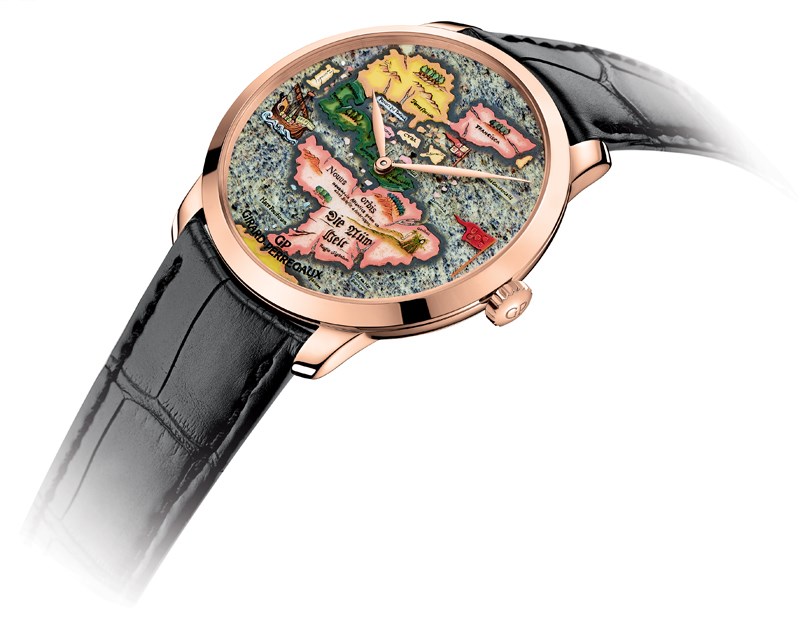
Lastly, the New World “Novus Orbis” that has been chosen in honor of Sebastian Müster, a German scholar who is attributed with 142 drawings of modern cartography. He was supported by over 120 employees to create his masterpiece, the Novus Orbis, as he replied on this contribution of state-of-the-art artisan processes, similar to watchmaking today.
The stones chosen by Girard-Perregaux for the New World timepiece is the genuine stone marquetry, blending the tones of blue and pink aventurine, calcite and Canadian nephrite. It takes roughly 95 hours to make a single dial. The finely selected stones are carved into mini-disks which, at the end of a manual polishing operation, reach 0.50mm. The technique used to create the dial gives the impression that the land on the map floats, reinforced by the artist’s micro-painting in six different tones.
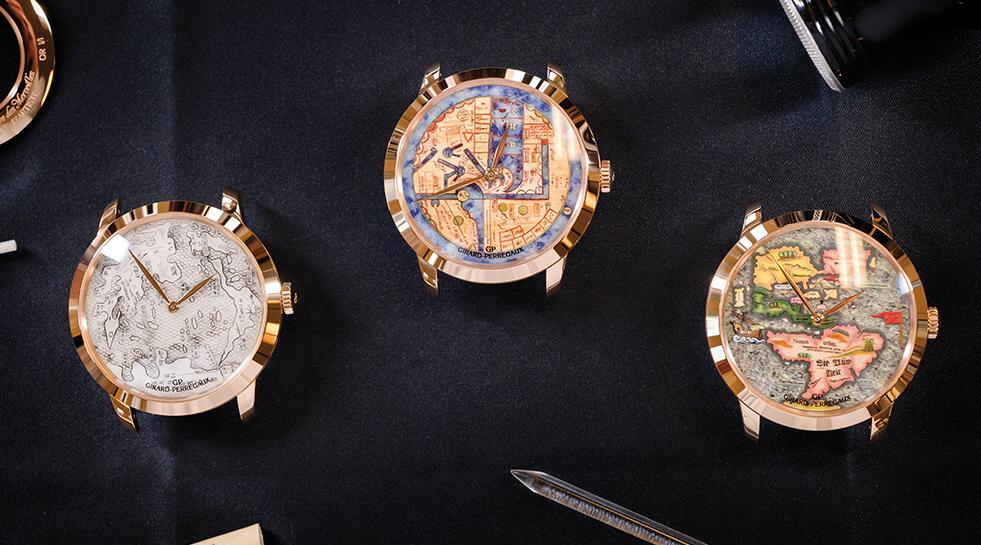
The Chamber of Wonders is truly just that, wonders on the wrist, and Girard-Perregaux have executed them flawlessly. If you get the chance, see them under a loupe and truly appreciate the work required to miniaturise these maps onto such a small surface area on the precious stone. For more info, please visit girard-perregaux.com

OSHEEN ARAKELIAN – CONTRIBUTING EDITOR
Drawing on a lifelong love of horology and a more recent introduction to appreciation of fine whisky, Osheen brought the two together with watch & whisky. He is the proprietor of the site, which covers everything related to watches and whisky. In between completing a degree in commercial law and supporting a rich social life, he is out and about attending all the latest watch and whisky events Sydney has to offer. His passion has also taken him around Australia attending a number of events and he hopes to continue his career in the watch industry on a more serious level after he graduates. Read his articles here.

